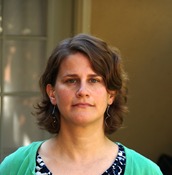Program Information
Generation of Volumetric Images with a Respiratory Motion Model Based On An External Surrogate Signal
M Hurwitz*, C Williams , P Mishra , S Dhou , J Lewis , Brigham and Women's Hospital, Dana-Farber Cancer Center, Harvard Medical School, Boston, MA, Boston, MA
Presentations
SU-E-J-73 Sunday 3:00PM - 6:00PM Room: Exhibit HallPurpose: Respiratory motion during radiotherapy treatment can differ significantly from motion observed during imaging for treatment planning. Our goal is to use an initial 4DCT scan and the trace of an external surrogate marker to generate 3D images of patient anatomy during treatment.
Methods: Deformable image registration is performed on images from an initial 4DCT scan. The deformation vectors are used to develop a patient-specific linear relationship between the motion of each voxel and the trajectory of an external surrogate signal. Correlations in motion are taken into account with principal component analysis, reducing the number of free parameters. This model is tested with digital phantoms reproducing the breathing patterns of ten measured patient tumor trajectories, using five seconds of data to develop the model and the subsequent thirty seconds to test its predictions. The model is also tested with a breathing physical anthropomorphic phantom programmed to reproduce a patient breathing pattern.
Results: The error (mean absolute, 95th percentile) over 30 seconds in the predicted tumor centroid position ranged from (0.8, 1.3) mm to (2.2, 4.3) mm for the ten patient breathing patterns. The model reproduced changes in both phase and amplitude of the breathing pattern. Agreement between prediction and truth over the entire image was confirmed by assessing the global voxel intensity RMS error. In the physical phantom, the error in the tumor centroid position was less than 1 mm for all images.
Conclusion: We are able to reconstruct 3D images of patient anatomy with a model correlating internal respiratory motion with motion of an external surrogate marker, reproducing the expected tumor centroid position with an average accuracy of 1.4 mm. The images generated by this model could be used to improve dose calculations for treatment planning and delivered dose estimates.
Funding Support, Disclosures, and Conflict of Interest: This work was partially funded by a research grant from Varian Medical Systems.
Contact Email:


